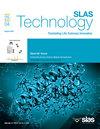NLP for computational insights into nutritional impacts on colorectal cancer care
IF 3.7
4区 医学
Q3 BIOCHEMICAL RESEARCH METHODS
引用次数: 0
Abstract
Colorectal cancer (CRC) is one of the most prominent cancers globally, with its incidence rising among younger adults due to improved screening practices. However, existing algorithms for CRC prediction are frequently trained on datasets that primarily reflect older persons, thus limiting their usefulness in more diverse populations. Additionally, the part of nutrition in CRC deterrence and management is gaining significant attention, although computational approaches to analyzing the impact of diet on CRC remain underdeveloped. This research introduces the Nutritional Impact on CRC Prediction Framework (NICRP-Framework), which combines Natural Language Processing (NLP) techniques with Adaptive Tunicate Swarm Optimized Large Language Models (ATSO-LLMs) to present important insights into the part of the diet in CRC care across diverse populations. The colorectal cancer dietary and lifestyle dataset, encompassing >1000 participants, is collected from multiple regions and sources. The dataset includes structured and unstructured data, including textual descriptions of food ingredients. These descriptions are processed using standardization techniques, such as stop word removal, lowercasing, and punctuation elimination. Relevant terms are then extracted and visualized in a word cloud. The dataset also contained an imbalanced binary CRC outcome, which is rebalanced utilizing the random oversampling. ATSO-LLMs are employed to analyze the processed dietary data, identifying key nutritional factors and forecasting CRC and non-CRC phenotypes based on dietary patterns. The results show that combining NLP-derived features with ATSO-LLMs significantly enhances prediction accuracy (98.4 %), sensitivity (97.6 %) specificity (96.9 %) and F1-Score (96.2 %), with minimal misclassification rates. This framework represents a transformative advancement in life science by offering a new, data-driven approach to understanding the nutritional determinants of CRC, empowering healthcare professionals to make more precise predictions and adapted dietary interventions for diverse populations.
NLP对营养对结直肠癌护理影响的计算见解
结直肠癌(CRC)是全球最突出的癌症之一,由于筛查方法的改进,其在年轻人中的发病率正在上升。然而,现有的CRC预测算法经常在主要反映老年人的数据集上进行训练,从而限制了它们在更多样化人群中的实用性。此外,尽管分析饮食对结直肠癌影响的计算方法尚不发达,但营养在结直肠癌预防和管理中的作用正受到越来越多的关注。本研究介绍了营养对CRC预测框架(NICRP-Framework)的影响,该框架将自然语言处理(NLP)技术与自适应被囊动物群优化大语言模型(ATSO-LLMs)相结合,为不同人群CRC护理中的饮食部分提供了重要见解。结直肠癌饮食和生活方式数据集包括来自多个地区和来源的1000名参与者。该数据集包括结构化和非结构化数据,包括食品成分的文本描述。这些描述使用标准化技术进行处理,例如去除停止词、小写字母和标点符号。然后提取相关术语并在词云中可视化。该数据集还包含一个不平衡的二进制CRC结果,该结果利用随机过采样进行重新平衡。atso - llm用于分析处理后的饮食数据,识别关键营养因子,并根据饮食模式预测结直肠癌和非结直肠癌表型。结果表明,将nlp衍生特征与ATSO-LLMs相结合可显著提高预测准确率(98.4%)、灵敏度(97.6%)、特异性(96.9%)和F1-Score(96.2%),且误分类率最低。该框架通过提供一种新的数据驱动方法来了解结直肠癌的营养决定因素,使医疗保健专业人员能够针对不同人群做出更精确的预测和适应的饮食干预措施,代表了生命科学的变革性进步。
本文章由计算机程序翻译,如有差异,请以英文原文为准。
求助全文
约1分钟内获得全文
求助全文
来源期刊

SLAS Technology
Computer Science-Computer Science Applications
CiteScore
6.30
自引率
7.40%
发文量
47
审稿时长
106 days
期刊介绍:
SLAS Technology emphasizes scientific and technical advances that enable and improve life sciences research and development; drug-delivery; diagnostics; biomedical and molecular imaging; and personalized and precision medicine. This includes high-throughput and other laboratory automation technologies; micro/nanotechnologies; analytical, separation and quantitative techniques; synthetic chemistry and biology; informatics (data analysis, statistics, bio, genomic and chemoinformatics); and more.
 求助内容:
求助内容: 应助结果提醒方式:
应助结果提醒方式:


